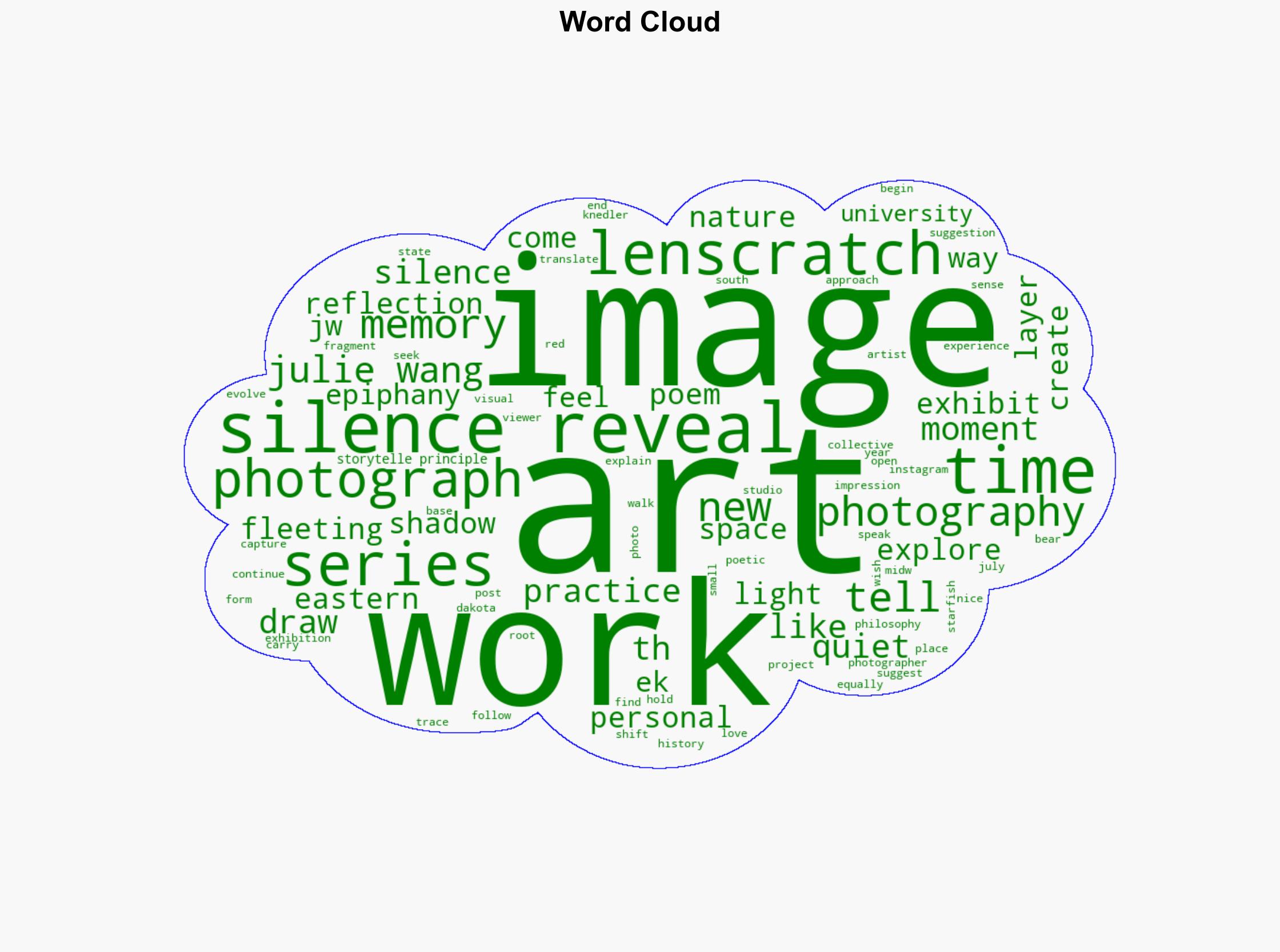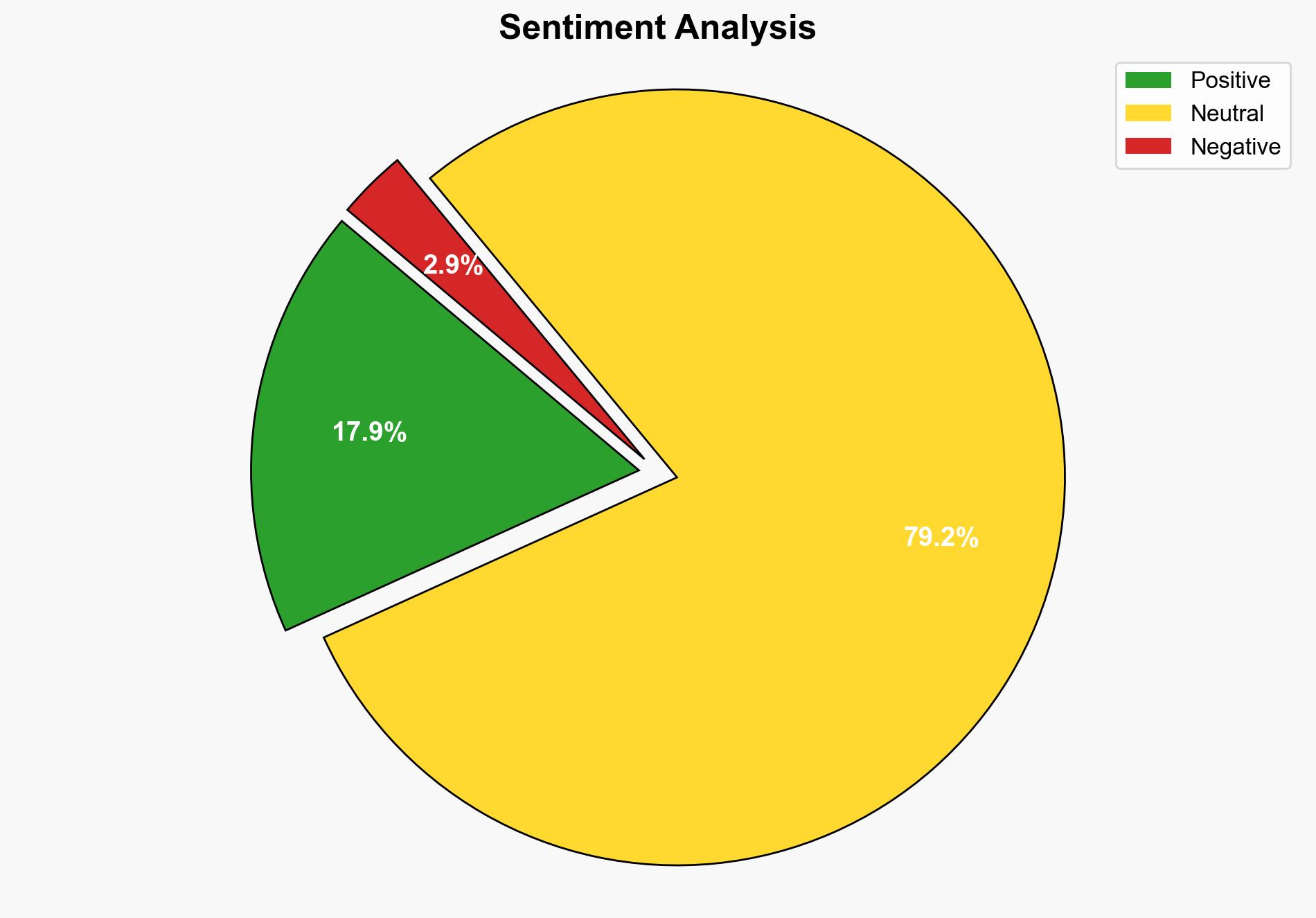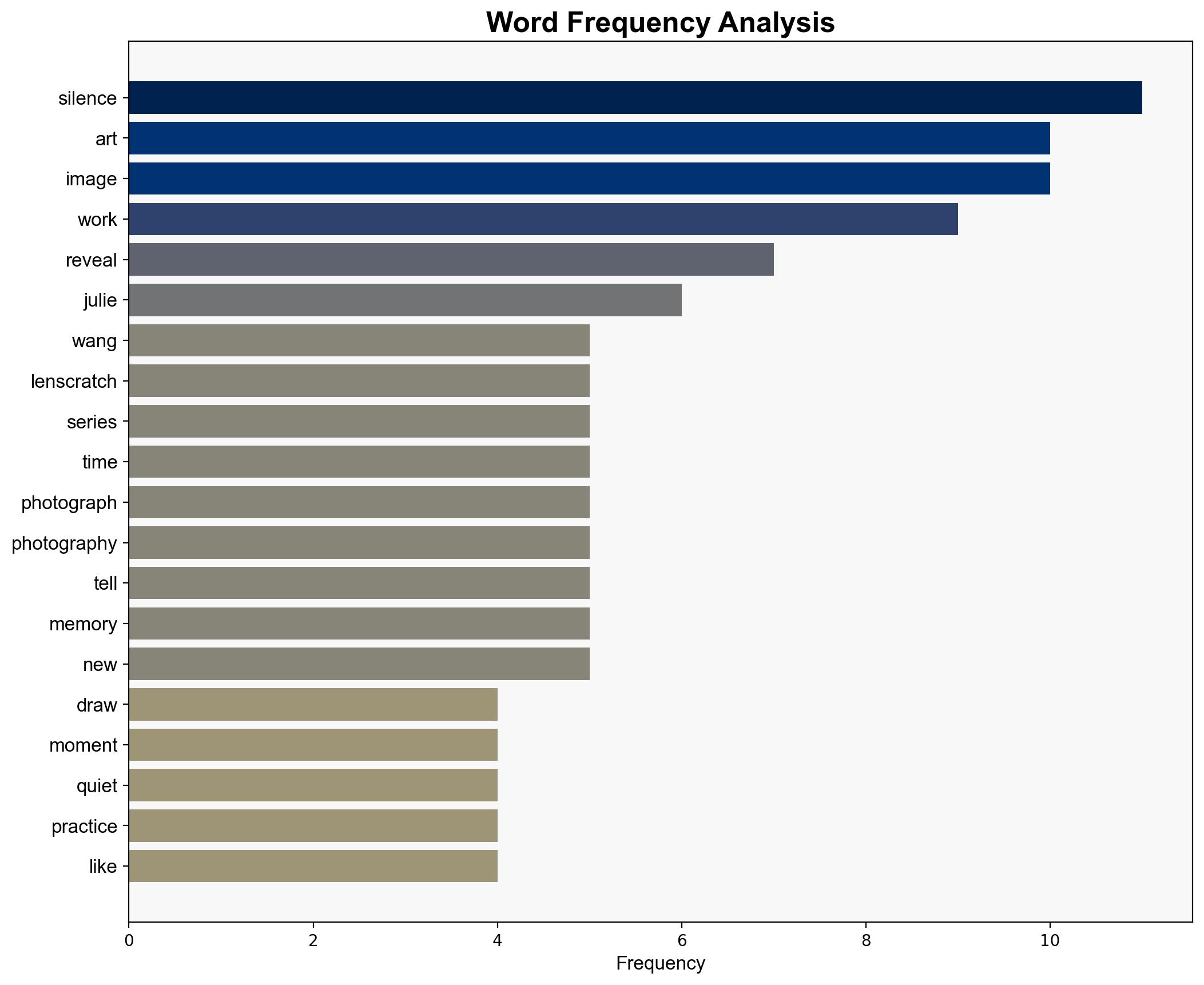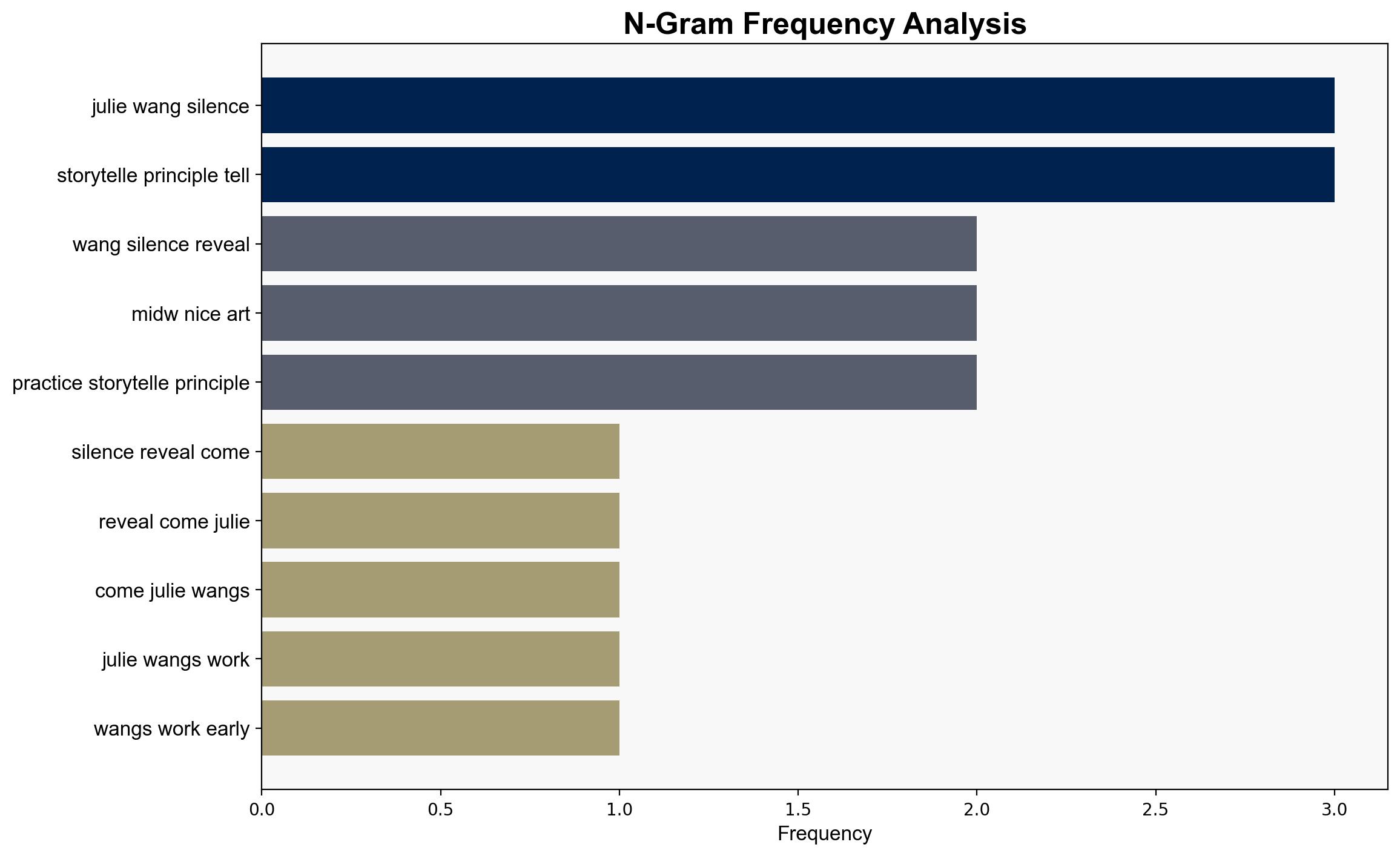Julie Wang What the Silence Reveals – Lenscratch.com
Published on: 2025-10-05
Intelligence Report: Julie Wang What the Silence Reveals – Lenscratch.com
1. BLUF (Bottom Line Up Front)
The analysis suggests that Julie Wang’s photographic work, “What the Silence Reveals,” is an exploration of the interplay between memory, perception, and Eastern philosophical aesthetics. The most supported hypothesis is that Wang’s work is intentionally designed to evoke personal reflection and emotional resonance through its contemplative nature. The confidence level is moderate due to the subjective nature of art interpretation. It is recommended to further explore Wang’s evolving series for insights into cultural and philosophical influences on contemporary art.
2. Competing Hypotheses
1. **Hypothesis A**: Julie Wang’s work is primarily an artistic exploration of Eastern philosophy and personal experience, aiming to create a space for viewer introspection and emotional engagement.
2. **Hypothesis B**: The work is a strategic attempt to establish a unique artistic identity in the international art scene, leveraging Eastern aesthetics as a differentiator.
Using ACH 2.0, Hypothesis A is better supported by the evidence of Wang’s focus on themes of nature, time, and personal experience, as well as her stated intention to evoke contemplation and emotional response. Hypothesis B is less supported as the evidence does not strongly indicate a strategic marketing approach.
3. Key Assumptions and Red Flags
– **Assumptions**: It is assumed that Wang’s references to Eastern philosophy are genuine and integral to her work, rather than superficial.
– **Red Flags**: The subjective interpretation of art may lead to cognitive biases, such as confirmation bias, where viewers see what they expect based on preconceived notions of Eastern aesthetics.
– **Blind Spots**: The analysis may overlook alternative interpretations of Wang’s work that do not align with the stated themes.
4. Implications and Strategic Risks
The exploration of Eastern philosophy in Wang’s work may influence cultural dialogues in the art community, potentially affecting perceptions of Eastern aesthetics. There is a risk of misinterpretation or cultural appropriation debates if the work is not clearly contextualized. Additionally, the evolving nature of the series suggests ongoing shifts in thematic focus, which could alter its reception and impact.
5. Recommendations and Outlook
- Monitor the evolution of Wang’s series for emerging themes that may influence broader cultural and philosophical discussions.
- Engage with art critics and cultural analysts to gain diverse perspectives on the work’s impact and reception.
- Scenario Projections:
- Best Case: The series gains recognition for its depth and cultural insight, enhancing Wang’s influence in the art world.
- Worst Case: Misinterpretations lead to controversy, overshadowing the artistic intent.
- Most Likely: The series continues to evolve, gradually building a niche audience appreciative of its contemplative nature.
6. Key Individuals and Entities
– Julie Wang
– Tim Rickett
– Andr Ramos Woodard
– Mary Oliver (poet referenced in the work)
7. Thematic Tags
cultural influence, contemporary art, Eastern philosophy, personal reflection





